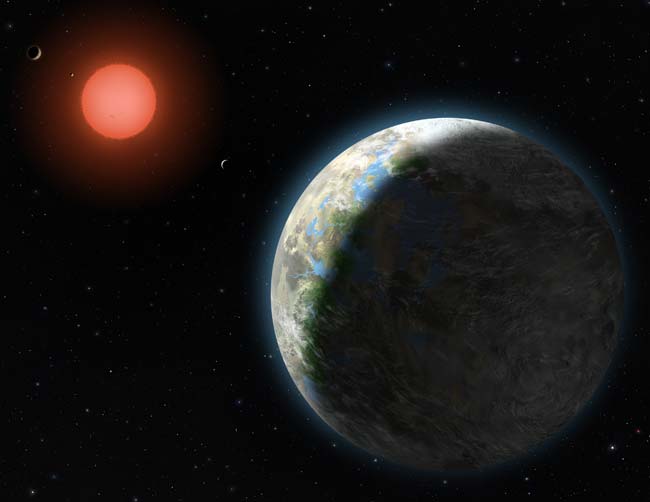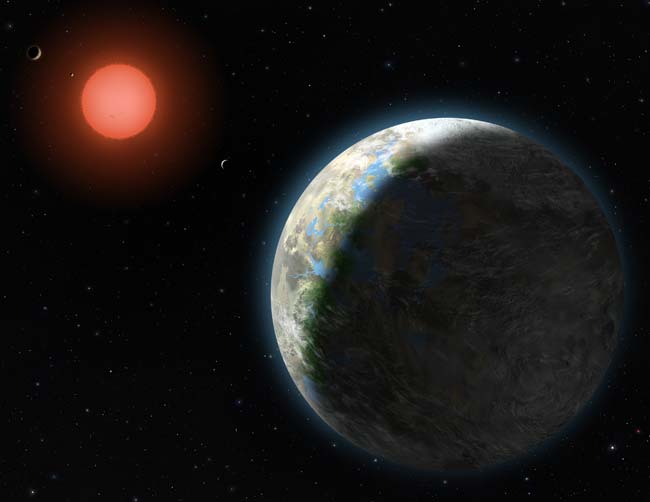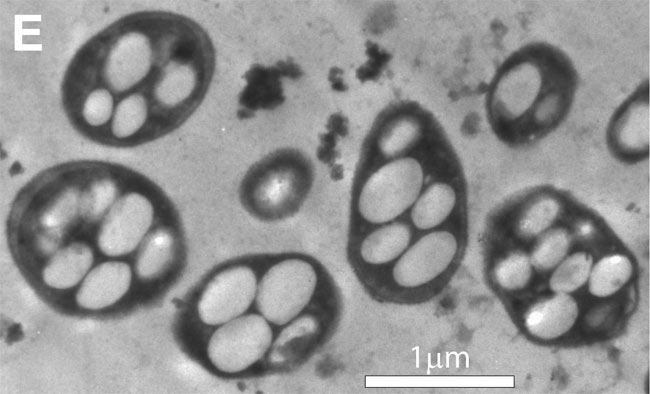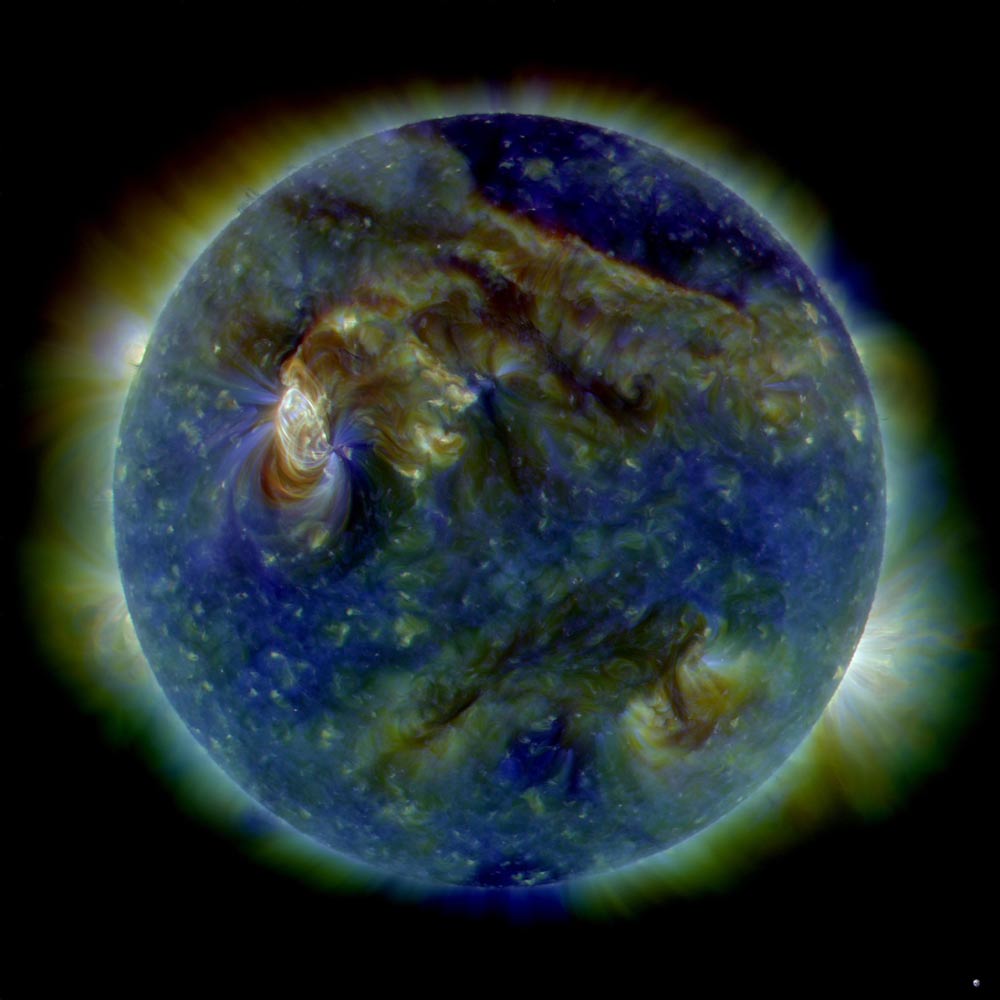The Top 7 Space Stories of 2010

In the year 2010, humanity made first contact with extraterrestrials — at least according to the sequel to the acclaimed film "2001: A Space Odyssey."
Nothing quite so earth-shattering happened in the real world this year. But space-science researchers did make a number of extraordinary discoveries in 2010, including finding what may or may not be the first habitable alien world and uncovering clues to the nature of dark matter.
1. The first habitable exoplanet?
It was news we had waited years to hear — that we might not be alone. In September, astronomers announced that they had discovered an alien world in the habitable zone of its star. The roughly Earth-size planet, called Gliese 581g, nestles in an orbit comfortable enough for liquid water, and thus perhaps life, to exist.
One of the planet's discoverers, Steven Vogt of the University of California, Santa Cruz, said, "My own personal feeling is that the chances of life on this planet are 100 percent."
However, doubts soon popped up over whether Gliese 581g even exists. Astronomer Francesco Pepe of the Geneva Observatory and his team suggested that what the other researchers saw was just a blip of noise in their readings. Time will tell whether this tantalizing world is real or not.
2. Asteroid dust returned to Earth
Breaking space news, the latest updates on rocket launches, skywatching events and more!
It was a mission crippled by several devastating blows, including a fuel leak, communications breakdowns and malfunctions with its ion engines. But in the end, the Japanese spacecraft Hayabusa set a record — it returned the first-ever samples from the surface of an asteroid.
The 1.25 billion-mile (2 billion-kilometer) voyage the spacecraft made to the silicon-rich asteroid Itokawa took seven years to complete. Hayabusa (Japanese for "Falcon") was supposed to drop a lander on the asteroid, but the lander missed the space rock's surface. In the end, Hayabusa itself landed twice on Itokawa to force samples into its return capsule.
The probe made a fiery return to Earth on June 13, with most of it burning up in the atmosphere during re-entry as planned. Its return capsule landed in the Australian outback, and researchers confirmed that Hayabusa had brought back some 1,500 dust grains from the asteroid.
3. Arsenic-devouring life?
The news that NASA would hold a news conference "to discuss an astrobiology finding that will impact the search for evidence of extraterrestrial life" triggered wild speculation from bloggers and journalists.
One of the most popular rumors in the blogosphere posited that scientists had discovered alien life on Saturn's moon Titan that lived off arsenic.
The reality was less extraordinary but still appeared intriguing. Researchers claimed to have discovered a microbe on Earth that can eat arsenic, a germ named GFAJ-1 that can incorporate the poison into its DNA and other vital molecules in place of the usual phosphorus.
The find suggested that life can take on more varied forms than once thought, and it promised to open the minds of researchers looking for signs of life beyond Earth.
However, a barrage of criticism from other scientists has cast doubt on whether these microbes actually live off arsenic. It remains to be seen whether these claims vaporize, just as those surrounding the hints of life on Martian meteorite ALH84001 seem to have done.
4. The sun woke up
After an unusually long episode of low activity on the sun, our star has apparently woken up with a bang, with powerful solar flares and massive eruptions that created dazzling aurora displays.
Activity on the sun goes through cycles lasting about 11 years during which sunspots, flares and magnetic activity rise and fall. Puzzlingly, the last solar cycle, which ended recently, had an especially long and weak low point that scientists had difficulty explaining.
The sun is now in the midst of an extremely active period after this lull. Researchers conjecture these changes might be similar to El Niño-like climate patterns seen on Earth.
5. Dark matter detected?
Dark matter — which scientists calculate makes up about 80 percent of all matter in the universe — gets its name from the fact that it's essentially invisible to astronomers' instruments, rendering it one of the greatest mysteries in science.
However, this year astrophysicists suggested they might finally have tracked down signs of dark matter, which could begin to explain its nature. Others remain unconvinced the elusive stuff has finally been found.
One notion regarding dark matter particles suggests they have antiparticles, meaning they annihilate each other on contact. Another idea suggests that dark matter particles are their own antiparticles. Either way, one sign of dark matter particles, researchers think, is a burst of annihilation-induced gamma rays.
The Fermi Gamma-ray Space Telescope has detected gamma rays at the very center of the galaxy that are brighter than expected. Researchers suggest that they sprang from annihilations resulting from densely packed dark matter particles, which may be sharing space with antiparticles — if they exist.
The data on this radiation suggests that the dark matter must be made of particles known as WIMPs (weakly interacting massive particles), which have masses almost nine times that of a proton.
Researchers also calculated a property known as the cross-section, which describes how likely the particle is to interact with others. This knowledge could represent a giant leap forward in our understanding of dark matter.
6. Close encounter with Comet Hartley 2
Not content with a rendezvous with just one comet, the Deep Impact spacecraft went the extra mile — 2.9 billion extra miles (4.6 billion km), actually — to chase down Comet Hartley 2, making it the first probe to visit two comets.
Deep Impact first visited Comet Tempel 1 in 2005, crashing an impactor into the comet to help scan its composition from afar. After its success, NASA found the probe still had enough fuel for one last voyage. Its mission to Hartley 2 revealed that the peanut-shaped comet is extremely active for its small size, spewing jets of cyanide-laced gas powered by carbon dioxide.
7. Universal constants not so constant?
Fundamental constants such as the strength of the electromagnetic force — the so-called fine-structure constant, or alpha — get their name from the fact that they are supposedly the same everywhere. However, recent observations of distant galaxies suggest that alpha might actually vary throughout the entire universe, meaning the speed of light or the strength of the electron's charge might depend on where you are.
For more than 20 years, some researchers have found what they think is evidence that the fine-structure constant varies over time.
This year, scientists analyzing data from the Keck telescope in Hawaii and the Very Large Telescope in Chile, which together cover both the northern and southern skies, found evidence that alpha actually seems to vary in space. In the northern sky, the fine-structure constant apparently gets smaller with increasing distance, while the opposite held true in the southern sky.

Charles Q. Choi is a contributing writer for Space.com and Live Science. He covers all things human origins and astronomy as well as physics, animals and general science topics. Charles has a Master of Arts degree from the University of Missouri-Columbia, School of Journalism and a Bachelor of Arts degree from the University of South Florida. Charles has visited every continent on Earth, drinking rancid yak butter tea in Lhasa, snorkeling with sea lions in the Galapagos and even climbing an iceberg in Antarctica. Visit him at http://www.sciwriter.us




